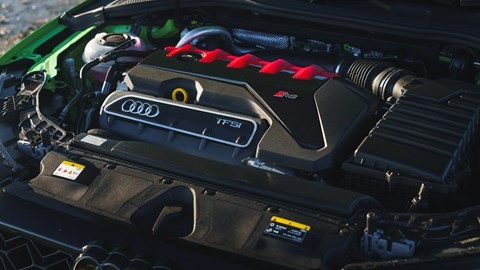The five-cylinder engine, a unique configuration in the automotive world, carved a distinctive niche for itself, particularly championed by Audi. While promotional materials in the 1980s touted its blend of four-cylinder economy and straight-six refinement, the reality is more nuanced. Let’s delve into the appeal, the advantages, and the inherent challenges of the five-cylinder engine, and why its future may be uncertain.
One of the primary factors influencing engine friction is piston movement within the cylinders. Reducing the number of cylinders, or their collective circumference, can indeed contribute to improved fuel economy. However, to suggest that a five-cylinder engine directly rivals a four-cylinder in efficiency is an overstatement. Audi’s marketing, while effective, took some liberties with the truth.
Similarly, the claim of straight-six smoothness requires closer examination. Inline-six engines are renowned for their “perfect balance,” a characteristic not fully shared by five-cylinder configurations. While a five-cylinder engine achieves “perfect force balance,” it inherently possesses unbalanced couples of both primary and secondary orders. Balance shafts can mitigate primary imbalances, and secondary imbalances are often accepted, but in terms of sheer smoothness, a five-cylinder engine cannot match the inherent equilibrium of a straight-six. Again, marketing narratives presented an idealized picture.
Despite these marketing exaggerations, there was a very practical reason for Audi’s adoption of the inline-five: packaging. In vehicles with longitudinally mounted engines positioned ahead of the transmission, engine length became a critical constraint. A straight-six engine often proved too long to fit comfortably within the engine bay. The five-cylinder configuration offered a compelling compromise in terms of length, paving the way for its adoption and evolution into an Audi signature. This pragmatic decision solidified the inline-five as an “Audi thing,” almost becoming a unique selling proposition, especially when turbocharged versions powered the legendary Quattro, cementing its iconic status.
 Audi RS3 front view, a performance car known for its distinctive five-cylinder engine.
Audi RS3 front view, a performance car known for its distinctive five-cylinder engine.
It’s important to clarify that the five-cylinder layout isn’t exclusively Audi’s domain. Other manufacturers, including Volvo, Ford, and Fiat, have also utilized this configuration. They were drawn to its packaging advantages, especially in transverse engine installations, where a straight-six would be even more problematic to accommodate. The widespread implementation of balance shafts largely leveled the playing field in terms of vibration across different engine layouts, diminishing concerns in this area.
However, as turbocharging gained prominence, new challenges emerged for the five-cylinder engine, particularly in turbocharged applications. Naturally aspirated five-cylinder engines excel because their design permits long primary exhaust headers. These longer headers facilitate superior exhaust tuning, effectively minimizing pulse interference and enhancing scavenging. In contrast, a turbocharged inline-five engine, characterized by its 144° firing intervals, a more compact exhaust manifold, and elevated back pressure from catalytic converters and mufflers, becomes susceptible to pulse interference.
Pulse interference occurs when exhaust valves remain open near the end of the exhaust stroke. A surge of burnt gases can then be forced back into the cylinder. This happens because when the exhaust valves of the next cylinder in the firing order open, a high-pressure wave propagates back into the manifold. This phenomenon leads to elevated levels of trapped residuals within the combustion chamber, subsequently causing issues like engine knock.
With turbocharged inline-four and inline-six engines, “pulse-dividing” the exhaust system is a relatively straightforward solution to mitigate pulse interference. However, this approach is not feasible with the five-cylinder configuration. Audi experimented with varying exhaust runner orientations and lengths in attempts to address this issue. Yet, the fundamental limitation remains: effectively resolving pulse interference necessitates long primary pipes, which are impractical in turbocharged road engines due to various emissions regulations and packaging constraints. Consequently, road-going turbocharged inline-five engines face inherent limitations in achieving high specific output. As the automotive industry shifted towards downsizing for greater efficiency, the five-cylinder layout was largely sidelined. Audi, however, has kept the five-cylinder engine alive, at least for now, primarily driven by the emotional connection to its brand heritage and the distinctive character it provides, especially in models like the RS3. If you appreciate the unique character of a five-cylinder engine, particularly in its turbocharged form, acquiring an RS3 while it’s still available might be a wise decision.